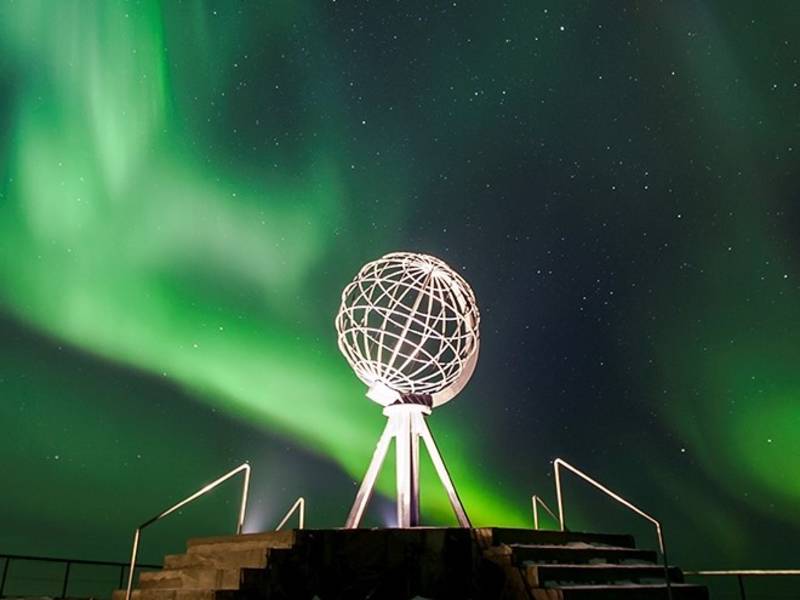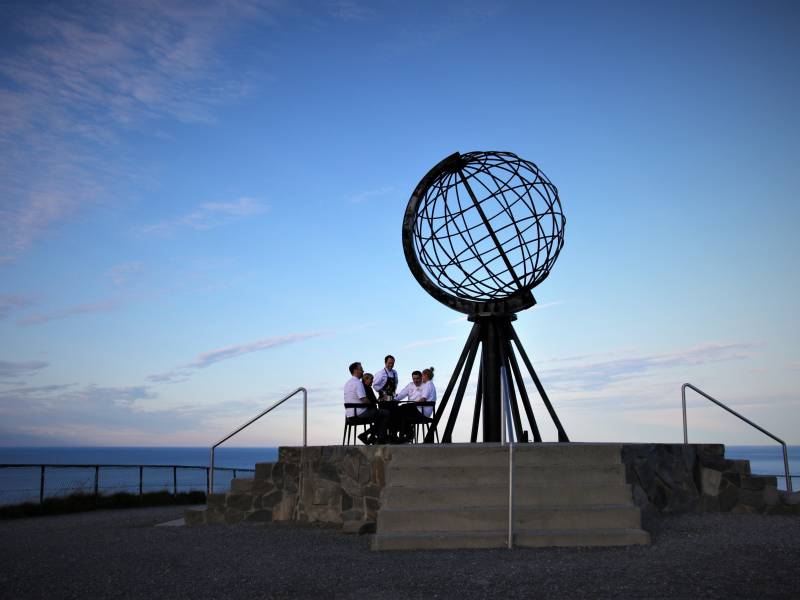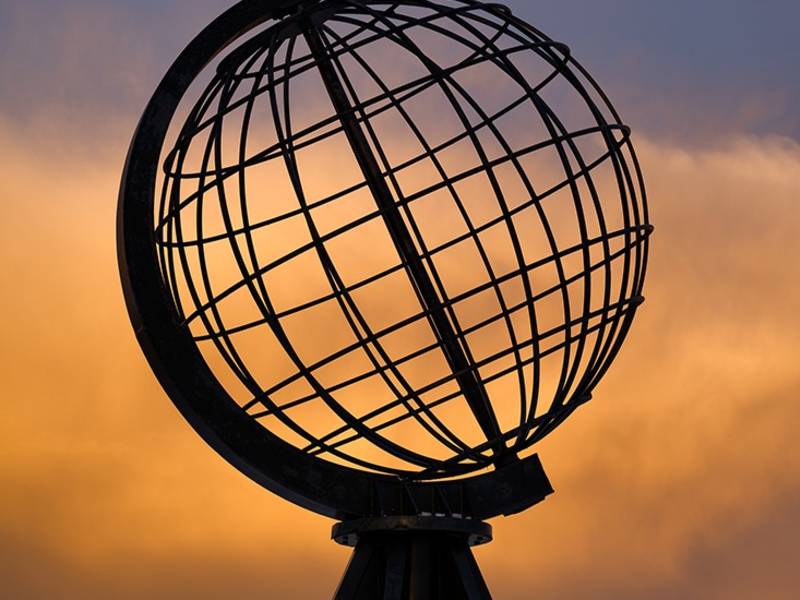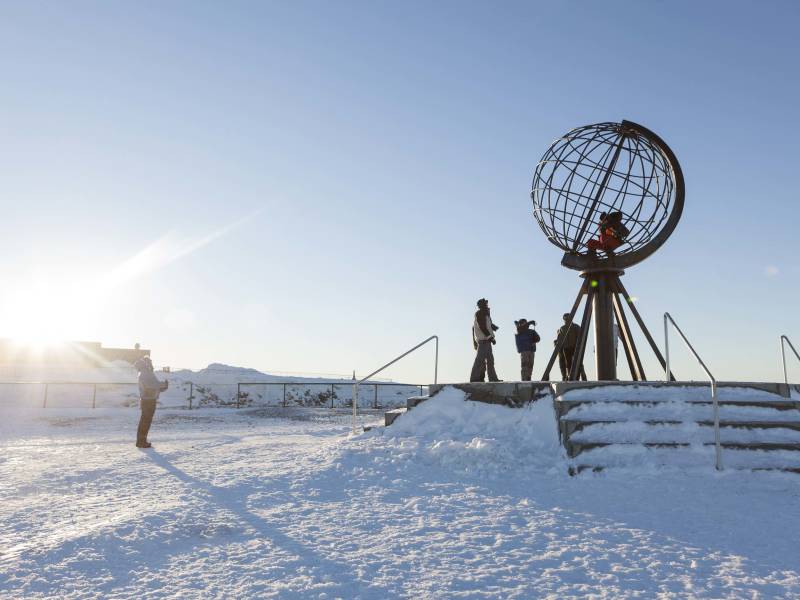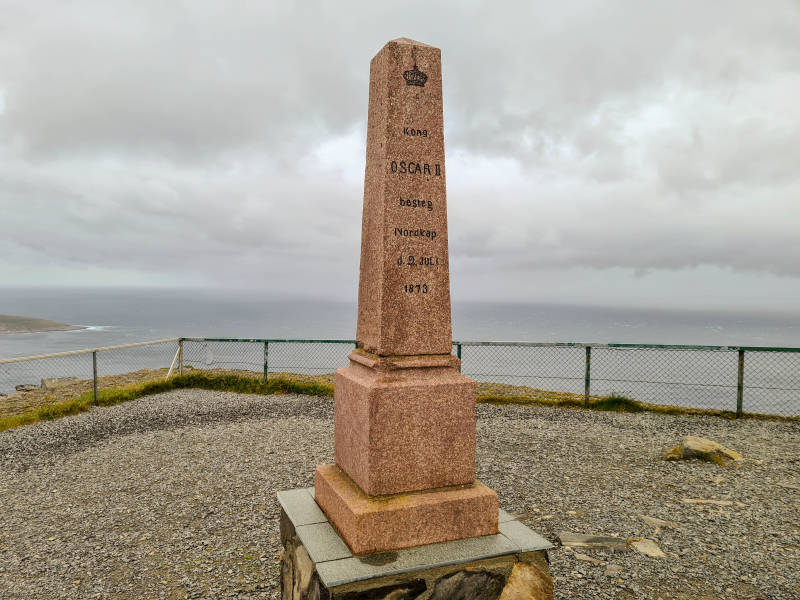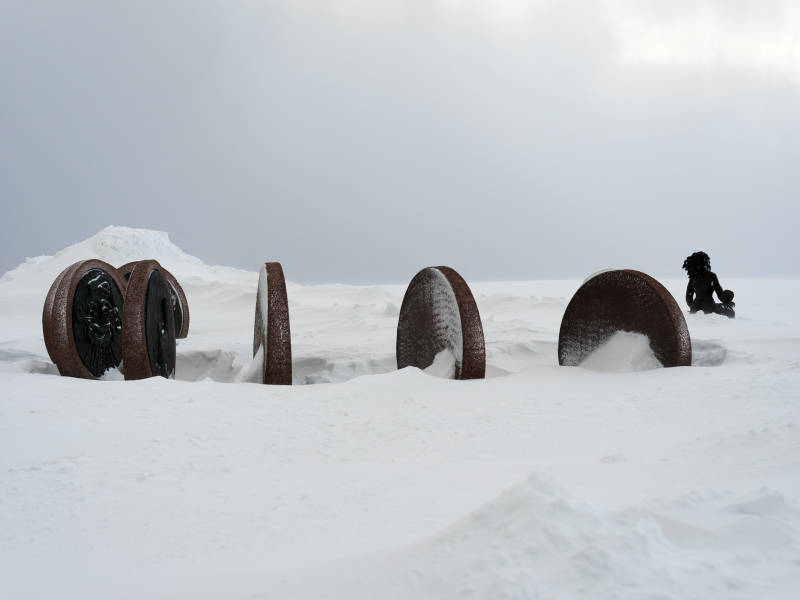The Globe
The Globe
So here you are, standing by the Globe. You have been traveling for hours, days, sometimes weeks, to reach the North Cape, and finally, you made it. For more than a century, King Oscar II obelisk overlooked the Arctic Ocean from the top of the North Cape cliff, 307 meters above sea level.
In 1978, the massive yet elaborate statue of the Globe took its place and has since then, withstood the toughest storms winter after winter and attracted millions of adventurers from each corner of the world.
If you are lucky, you have been blessed with clear weather, and you can see the horizon to the north. Across these harsh, sometimes raging waters, Svalbard is the only inhabited area standing between you and the North Pole. You are currently 2093km away from it, closer than you are from Berlin, London, or even Reykjavik.
In the summer, if you look full north, you will see the midnight sun at its lowest point during this magical time of never-ending days, and as your shadow points south, the Globe will be at the forefront of the most beautiful midnight sun pictures and memories.
Audio guides available in:English (British), Norsk bokmål, Deutsch , Français, Español, Italiano, Suomalainen
